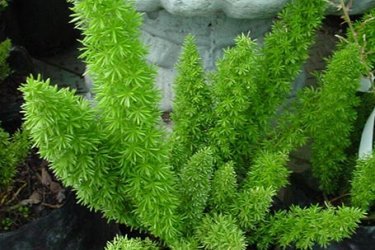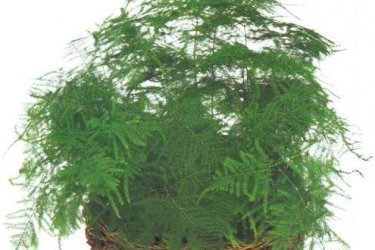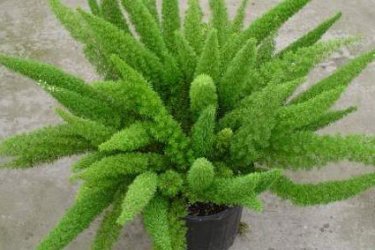Asparagus
There are more than 300 representatives of this species of asparagus; they are found in nature in zones with different climatic conditions. Among them there are ornamental and edible plants. Vegetable species are called asparagus and are grown industrially in the open air.
We more often come across asparagus, which are grown as indoor flowers. Different types of asparagus may be subshrubs, herbs or vines.
The usual leaves on the stems are absent; instead, you can see cladonias, bright green needles that perform all the functions of leaves.
The flowers of the plant are small, have a pleasant sweetish aroma, ripe berries are red or blue and look quite decorative, but are not edible.
How does a plant reproduce?
Propagation of the most popular feathery asparagus can be produced in different ways:
- the easiest way to divide a bush when replanting
- sowing freshly collected seeds
- complex and very problematic - cuttings
Planting cuttings requires constant care, including:
- construction of a greenhouse
- systematic spraying and ventilation of plantings
It will take 4 to 6 weeks to wait for rooting, but even with good care the rooting percentage is not high.
It is for this reason that they often resort to growing Sprenger asparagus from seeds, if it is not possible to obtain part of the rhizome during transplantation.
Features of care
To the delight of gardeners, we note that asparagus is not considered a capricious plant; they do well in bright light and in partial shade; the best place to place flowerpots is windows facing east or west.
In summer, flower pots can be kept on the balcony. Drafts should be avoided.
The recommended temperature in summer is up to +23 C, in winter not lower than + 14 C. When watering, overwatering should be avoided, but at the same time the soil should not be overdried. Too dry air is not good for the plant; bushes need to be sprayed periodically; the spraying procedure is especially important if there is a tendency for the leaves to turn yellow.
In the summer, complex fertilizers are used for fertilizing, applied during watering 2 times a month.
Replanting and pruning
Both points are very important for the plant. Since it grows very actively, it is recommended to replant the bushes into larger pots every spring. In this case, you can divide the rhizomes.
When replanting and during the care process, all old branches that have lost their cladonia should be removed. Correct and timely pruning is an excellent incentive for the formation of new shoots.
Asparagus is used for landscaping residential premises, when creating vertical and cascading compositions in winter gardens. Frost-resistant varieties are planted in flower beds, they are often used to decorate patios, and to landscape terraces and balconies.




